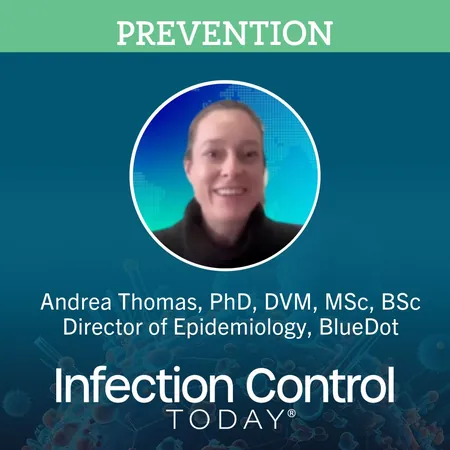
Brace Yourself for a Tough Winter: Experts Warn of Rising Infectious Diseases!
2024-11-08
Author: Daniel
Experts Warn of Rising Infectious Diseases
In a gripping recent webinar, Dr. Andrea Thomas, a leading epidemiologist at BlueDot Global, revealed alarming insights into the global landscape of infectious diseases, particularly those affecting the Northern Hemisphere. With winter fast approaching, healthcare systems brace themselves for the return of several seasonal respiratory viruses, including influenza and the ever-persistent respiratory syncytial virus (RSV), all while still grappling with COVID-19's ongoing presence.
“This period marks the anticipated resurgence of seasonal respiratory viruses, such as the flu and RSV,” Thomas noted. “At BlueDot, we actively monitor the global circulation of these pathogens, along with COVID-19, to prepare efficiently for what lies ahead.”
Concern over Southern Hemisphere Trends
The Southern Hemisphere's recent health patterns indicate a concerning return to pre-pandemic disease behaviors, putting additional strain on healthcare infrastructures already battling year-round COVID-19 cases. The insights gained during the Southern Hemisphere's winter are crucial for anticipating similar trends in Northern Hemisphere nations.
Monitoring for Avian Influenza H5N1
Dr. Thomas emphasized the need for consistent global disease trend monitoring to effectively preempt and control outbreaks. A major highlight of the webinar was the urgent discussion surrounding the avian influenza strain H5N1, escalating in livestock, particularly dairy cattle. Although the immediate threat to public health is deemed low, there’s increasing concern about potential human spillovers among agricultural workers. “Understanding the mutations of the H5N1 virus and preparing for worst-case scenarios is imperative,” Thomas stated, stressing the importance of robust surveillance and vaccination strategies.
Rising Vector-Borne Diseases
Moreover, the discussion transitioned to the rising threat of vector-borne diseases like dengue and chikungunya, which have begun to show significant prevalence in Brazil and are now appearing in local regions of the United States. This surge calls for a renewed focus on vector control and effective public health initiatives to limit transmission at the community level.
Marburg Virus and Global Vigilance
In a timely element of the coverage, Thomas shed light on the Marburg virus, a severe hemorrhagic fever akin to Ebola. While mostly confined to specific regions in Africa, recent outbreaks necessitate heightened global vigilance. The swift response in deploying trial vaccines indicates a proactive approach that could be lifesaving as threats emerge.
Call to Action for Healthcare Professionals
Healthcare professionals and facilities are urged to ramp up infection prevention strategies this winter. Strengthening preventive measures and enhancing ventilation systems can significantly reduce the risk of airborne transmission among patients and healthcare workers alike. “Being proactive, rather than reactive, in our approach to infection control is essential,” Thomas concluded.
Looking Ahead
As we prepare for what promises to be a challenging winter, the insights shared in this webinar serve as a critical reminder of the ever-evolving landscape of infectious diseases and the importance of vigilance in protecting public health. Are we ready to face the impending storm? Only time will tell!



 Brasil (PT)
Brasil (PT)
 Canada (EN)
Canada (EN)
 Chile (ES)
Chile (ES)
 España (ES)
España (ES)
 France (FR)
France (FR)
 Hong Kong (EN)
Hong Kong (EN)
 Italia (IT)
Italia (IT)
 日本 (JA)
日本 (JA)
 Magyarország (HU)
Magyarország (HU)
 Norge (NO)
Norge (NO)
 Polska (PL)
Polska (PL)
 Schweiz (DE)
Schweiz (DE)
 Singapore (EN)
Singapore (EN)
 Sverige (SV)
Sverige (SV)
 Suomi (FI)
Suomi (FI)
 Türkiye (TR)
Türkiye (TR)